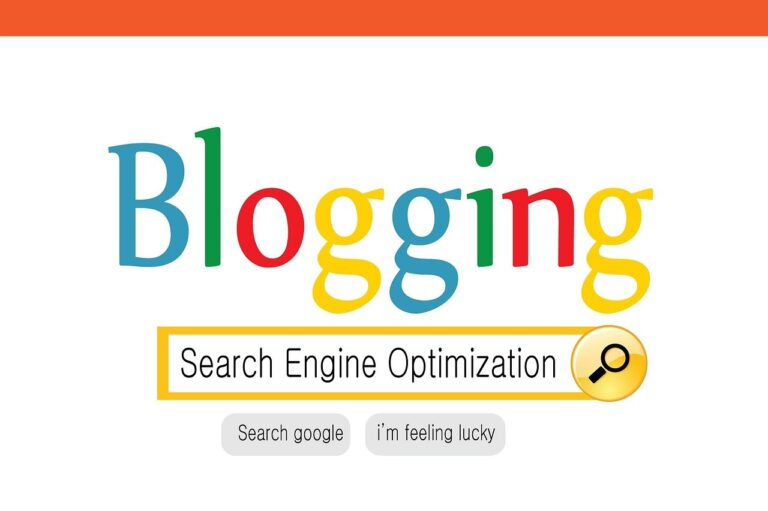Effective questioning is a powerful tool for engaging clients and uncovering valuable insights. By mastering the art of asking thoughtful questions, you can foster meaningful dialogues that lead to deeper understanding and more productive outcomes.
Skilled questioning techniques allow you to guide conversations, uncover hidden perspectives, and help clients gain clarity on their challenges and goals.

Asking the right questions can transform ordinary interactions into dynamic exchanges of ideas. Whether you’re a consultant, coach, or business professional, developing your questioning skills can significantly enhance your ability to connect with clients and provide value.
By learning to craft open-ended, probing, and reflective questions, you’ll be better equipped to navigate complex conversations and drive meaningful results.
Key Takeaways
- Strategic questioning guides clients through thought processes and uncovers hidden perspectives
- Open-ended and probing questions encourage in-depth sharing of thoughts and ideas
- Active listening and adapting question styles are crucial for meaningful dialogues
Understanding the Importance of Effective Questioning
Effective questioning is a vital skill that enhances client engagement and facilitates meaningful dialogues. It enables you to gather crucial information, promote deeper understanding, and foster stronger relationships with your clients.
The Role of Questioning in Holistic Practice
Questioning plays a pivotal role in holistic practice by helping you gain a comprehensive understanding of your clients’ needs, concerns, and goals.
By asking thoughtful, open-ended questions, you can:
- Uncover underlying issues that may not be immediately apparent
- Encourage clients to reflect on their experiences and emotions
- Identify potential barriers to progress or treatment
Effective questioning also allows you to tailor your approach to each individual client, ensuring a more personalized and effective service.
Benefits of Engaging Clients in Meaningful Dialogues
Engaging clients in meaningful dialogues through effective questioning techniques offers numerous benefits:
-
Enhanced trust and rapport: By showing genuine interest in your clients’ perspectives, you build stronger relationships.
-
Improved problem-solving: Questioning facilitates critical thinking, enabling both you and your clients to explore solutions more effectively.
-
Increased client empowerment: Thoughtful questions encourage clients to take an active role in their own progress and decision-making.
-
Better outcomes: By gathering comprehensive information, you can develop more targeted and successful interventions.
-
Continuous learning: Engaging in meaningful dialogues helps you gain valuable insights that can inform your practice and professional growth.
Open-Ended Questioning Techniques
Open-ended questioning techniques are essential tools for engaging clients in meaningful dialogues. These techniques encourage deeper exploration of thoughts and feelings, leading to more productive counseling sessions.
What Are Open-Ended Questions?
Open-ended questions invite clients to share their experiences and perspectives freely. Unlike closed-ended questions that can be answered with a simple “yes” or “no,” open-ended questions require more thoughtful responses.
These questions typically begin with words like:
- What
- How
- Why
- Tell me about
- Describe
Open-ended questions allow clients to express themselves in their own words, providing valuable insights into their mindset and experiences.
Examples of Effective Open-Ended Questions
Effective open-ended questions can significantly enhance the counseling process. Here are some examples:
- “What brings you here today?”
- “How do you feel about that situation?”
- “Can you describe your relationship with your family?”
- “What changes would you like to see in your life?”
- “How have you been coping with these challenges?”
These questions encourage clients to explore their thoughts and feelings more deeply, providing a richer context for the therapist to work with.
How to Use Open-Ended Questions to Foster Dialogue
To use open-ended questions effectively, you should:
-
Start broad and narrow down: Begin with general questions and gradually focus on specific areas of concern.
-
Listen actively: Pay close attention to the client’s responses and use them to guide your next question.
-
Follow up: Use the client’s answers to delve deeper into important topics.
-
Be patient: Allow clients time to think and respond fully.
-
Avoid leading questions: Let the client guide the conversation rather than imposing your own assumptions.
By using these techniques, you can create a supportive environment that encourages clients to open up and engage in meaningful dialogue.
Probing Questions for Deeper Insights
Probing questions serve as a powerful tool for uncovering hidden perspectives and fostering a deeper understanding of clients’ thoughts and feelings. By employing these techniques, you can guide conversations to more meaningful and insightful territory.
Definition and Purpose of Probing Questions
Probing questions are inquiries designed to encourage deeper thinking and elicit more detailed responses from clients. Their purpose is to go beyond surface-level answers, prompting individuals to clarify their thoughts, expand on their ideas, or explore different perspectives. By using probing questions, you can:
- Uncover underlying motivations and beliefs
- Encourage self-reflection in clients
- Identify potential obstacles or challenges
- Gain a more comprehensive understanding of a situation
These questions help create an environment of curiosity and exploration, essential for productive therapeutic conversations.
Techniques for Crafting Probing Questions
To craft effective probing questions, consider the following techniques:
- Use open-ended phrasing: Avoid yes/no questions and opt for those that require elaboration.
- Start with “what,” “how,” or “why”: These prompts naturally encourage more detailed responses.
- Build on previous responses: Use the client’s words to formulate follow-up questions.
- Employ silence: Allow pauses after asking a question to give clients time to reflect.
- Be specific: Focus on particular aspects of the client’s experience rather than broad generalizations.
Remember to maintain a neutral tone and avoid leading questions that might influence the client’s response.
Practical Examples in Wellness and Alternative Health Settings
In wellness and alternative health contexts, probing questions can help you better understand clients’ health concerns, lifestyle choices, and treatment preferences. Here are some examples:
- “What changes have you noticed in your energy levels since starting this new routine?”
- “How do you feel your current diet is affecting your overall well-being?”
- “Can you describe any challenges you’ve faced in maintaining your meditation practice?”
When touching on sensitive areas, approach topics with empathy and care. Ensure clients feel safe and supported by creating a non-judgmental space for open discussion.
By incorporating these probing questions into your practice, you can guide clients towards deeper self-awareness and more effective health strategies.
Reflective Questioning Methods

Reflective questioning encourages deeper self-examination and insight in clients. These methods promote thoughtful consideration of experiences, emotions, and beliefs.
Understanding Reflective Questions
Reflective questions prompt clients to examine their thoughts, feelings, and actions more closely. They often begin with phrases like “How did you feel when…?” or “What did you learn from…?”
These questions invite introspection rather than simple yes/no answers. They encourage clients to pause and consider their experiences from new perspectives.
Effective reflective questions are open-ended and non-judgmental. They create space for clients to explore their own insights without feeling pressured toward specific conclusions.
The Impact of Reflective Questions on Client Self-Reflection
Reflective questioning enhances self-awareness and promotes personal growth. By guiding clients to examine their experiences more deeply, you help them uncover new insights.
This process can lead to:
- Increased emotional intelligence
- Better decision-making skills
- Enhanced problem-solving abilities
- Greater self-understanding
Reflective questions often reveal patterns in thinking or behavior that clients may not have noticed before. This awareness can be a powerful catalyst for positive change.
When clients engage in self-reflection, they often feel more empowered and take greater ownership of their personal development journey.
Implementing Reflective Questions in Practice
To effectively use reflective questioning:
- Create a safe, non-judgmental environment
- Listen actively and attentively
- Ask open-ended questions that encourage exploration
- Allow time for clients to process and respond
Start with broader questions and gradually move to more specific inquiries. This approach helps clients feel comfortable and builds trust.
Example reflective questions include:
- “What aspects of this situation are most challenging for you?”
- “How does this experience relate to your goals?”
- “What insights have you gained from this reflection?”
Remember to tailor your questions to each client’s unique situation and needs. Reflective questioning is a skill that improves with practice and patient application.
Building Rapport Through Effective Questioning

Effective questioning techniques are essential for building strong rapport with clients. The right questions can foster trust, demonstrate active listening, and create meaningful interactions that lead to productive therapy sessions.
Establishing Trust with Clients
To build trust, ask open-ended questions that show genuine interest in your client’s experiences. Use nonverbal cues that convey warmth and understanding. Start with simple, non-threatening questions to help clients feel at ease.
Examples:
- “What brings you here today?”
- “How have you been feeling lately?”
Gradually move to more in-depth questions as trust develops. Be patient and allow clients to share at their own pace.
Avoid judgmental language or tone. Instead, use empathetic statements to validate their feelings.
Techniques for Active Listening
Active listening involves more than just hearing words. It requires full attention and thoughtful responses. Show empathy and compassion, especially when clients discuss difficult topics.
Use clarifying questions to ensure you understand:
- “Can you tell me more about that?”
- “What do you mean when you say…?”
Reflect back what you’ve heard to demonstrate understanding:
- “It sounds like you’re feeling…”
- “If I’m hearing you correctly…”
Pay attention to non-verbal cues and body language. These can provide valuable insights into a client’s emotional state.
Combining Questioning Techniques for Better Client Interactions
Blend different questioning styles to create a comprehensive approach. Use a mix of open-ended questions to encourage exploration and closed questions for specific information.
Incorporate circular questions to explore relationships and patterns:
- “How do you think your partner feels about this situation?”
Use scaling questions to assess progress or intensity:
- “On a scale of 1-10, how anxious do you feel right now?”
Employ solution-focused questions to promote positive change:
- “What would a successful outcome look like for you?”
Remember to tailor your questioning style to each client’s needs and comfort level. Be flexible and adjust your approach as needed throughout the session.
Practical Tips for Implementing Questioning Techniques

Mastering questioning techniques requires practice, adaptability, and continuous refinement. By tailoring your approach, overcoming obstacles, and honing your skills, you can effectively engage clients in meaningful dialogues.
Adapting Techniques to Individual Client Needs
To maximize the effectiveness of your questioning, tailor your approach to each client’s unique situation. Consider their communication style, background, and goals before selecting the most appropriate technique.
Open-ended questions work well for clients who are comfortable sharing detailed information. For those who prefer structure, use probing questions to guide the conversation more directly.
Pay attention to non-verbal cues and adjust your questioning style accordingly. If a client seems hesitant, switch to gentler, more supportive questions. For confident clients, challenge them with thought-provoking inquiries.
Use a mix of question types to keep the dialogue engaging:
- Reflective questions to encourage self-analysis
- Hypothetical scenarios to explore potential outcomes
- Scaling questions to measure progress or satisfaction
Overcoming Common Challenges in Questioning
When implementing questioning techniques, you may encounter various obstacles. Prepare strategies to address these challenges effectively.
If a client gives short, uninformative answers, rephrase your questions or use follow-up probes to encourage elaboration. For example:
- “Can you tell me more about that?”
- “What specifically made you feel that way?”
When faced with resistance or defensiveness, switch to more neutral, less threatening questions. Focus on facts rather than emotions to help the client feel more comfortable.
For clients who tend to go off-topic, gently guide them back using transitional phrases:
- “That’s interesting. How does it relate to our original question about…?”
- “Let’s circle back to the main issue we were discussing…”
Continuous Improvement and Skill Development
To enhance your questioning techniques, commit to ongoing learning and practice. Regularly assess your performance and seek ways to refine your approach.
Record your sessions (with client consent) and review them to identify areas for improvement. Pay attention to:
- Clarity of your questions
- Timing and pacing
- Client engagement levels
Seek feedback from clients and colleagues. Ask them to evaluate your questioning style and provide suggestions for enhancement.
Stay updated on new questioning methods by:
- Attending workshops and seminars
- Reading relevant literature and research
- Participating in coaching forums or professional networks
Practice different techniques in various scenarios to broaden your skill set. Role-play with colleagues to simulate challenging situations and test new approaches.
Conclusion

Mastering effective questioning techniques transforms your client interactions. By applying the strategies discussed, you’ll foster deeper connections and gain valuable insights.
Remember to prepare thoughtful questions in advance. This ensures you cover key topics while remaining flexible to explore new areas as they arise.
Active listening plays a crucial role. Pay close attention to your client’s responses and use follow-up questions to delve deeper into important points.
Open-ended questions encourage detailed responses, while probing questions help clarify ambiguities. Use a mix of both to maintain engaging dialogues.
Remain curious and open-minded throughout your conversations. This attitude helps create a safe space for clients to share openly and honestly.
Practice these techniques regularly to refine your skills. With time, you’ll naturally incorporate effective questioning into your communication style.
By embracing these methods, you’ll enhance your ability to understand clients’ needs and provide tailored solutions. This leads to stronger relationships and improved outcomes in your professional interactions.
Frequently Asked Questions

Effective questioning techniques are essential for meaningful client interactions. These strategies enhance understanding, promote learning, and facilitate deeper conversations across various professional settings.
What are the key strategies for effective questioning when engaging with clients?
Open-ended questions are crucial for engaging clients in meaningful dialogues. They encourage detailed responses and allow clients to express themselves freely.
Active listening is equally important. Pay close attention to clients’ answers and use follow-up questions to clarify and explore their thoughts further.
Avoid leading questions that may bias responses. Instead, use neutral language to gather unbiased information from clients.
How can questioning techniques be used to enhance learning in an educational setting?
Socratic questioning is an effective technique in educational contexts. It prompts students to think critically and defend their positions.
Encourage students to ask questions themselves. This fosters curiosity and helps them develop their own inquiry skills.
Use probing questions to guide students towards deeper understanding of complex topics. This approach helps them connect new information with existing knowledge.
Can you provide examples of probing questions that lead to deeper client understanding?
“What led you to that conclusion?” This question encourages clients to explain their reasoning process.
“How does this situation affect you emotionally?” This helps clients explore their feelings and personal impact.
“What alternatives have you considered?” This prompts clients to think more broadly about their options.
What are the essential components of an effective questioning approach?
Empathy and care are crucial when addressing sensitive topics. Create a safe space for clients to open up and share freely.
Timing is important. Know when to ask questions and when to allow silence for reflection.
Flexibility in your approach helps you adapt to each client’s unique needs and communication style.
How does one adjust questioning techniques to handle challenging conversations?
Remain calm and non-judgmental when dealing with difficult topics. Your demeanor can help put clients at ease.
Use clarifying questions to ensure you understand the client’s perspective correctly. This can help prevent misunderstandings.
Be prepared to redirect the conversation if it becomes unproductive. Have alternative questions ready to guide the discussion back on track.
Why is it important to employ effective questioning within professional client interactions?
Effective questioning builds trust and rapport with clients. It shows that you value their input and are genuinely interested in their perspective.
Thoughtful questions can lead to transformative insights for clients. They may uncover new solutions or perspectives they hadn’t considered before.
Skilled questioning demonstrates your professional expertise. It showcases your ability to guide productive conversations and deliver value to clients.






